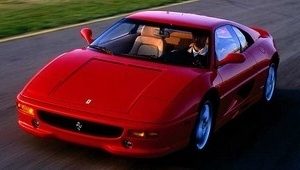
Challenge Stradale
2003 / 2004
Vehicle type
Motor type
Gearbox type
Sports car
F131
Motor
Displacement
Arrangement
V8
3.6 L
central rear
Power
0-100
Max speed
425 ch
5.1 s
300 km/h
With the exception of a few very isolated cases, a Ferrari already has a very suggestive line which suggests that few cars will be able to hold their own on the road or on the racetrack. But when the magicians at Maranello turned their attention to the 360 Modena and transformed it into a racing beast, the result lived up to expectations. The body was lowered even further and fitted with larger wheels, additional air intakes were added and numerous elements were made of carbon. The exterior mirrors and the rear apron housing the round lights are made from this noble material, which offers the advantage of greater rigidity and lighter weight. Transverse fins have been added to the rear diffuser to increase the offset by 50%. For once, the Cavallino Rampante on the flanks has not been added by its owner and is standard, proving the sporty vocation of this Challenge Stradale. And last but not least, the white stripe running the length of the body with the three colours of Italy in the centre is a real eye-catcher.
CONSUMPTION
18.2 L/100kms
LENGTH
4477 cm
TRANSMISSION
rear-wheel drive
WIDTH
1922 cm
RESERVOIR
95 L
HEIGHT
1199 cm
BOOT VOLUME
220 L
WEIGHT
1280 kg









